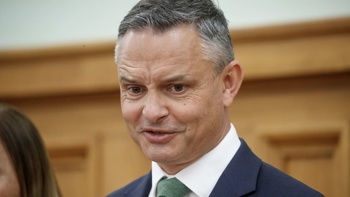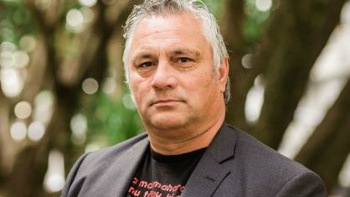Christchurch Airport has today released a new research report for its controversial Central Otago airport plans and confirmed the runway will have “slightly more” impact on the nearby village of Tarras.
The proposal to build a new international airport at the picturesque Central Otago site has sparked debate for more than three years, with opposition from many Tarras locals and environmentalists.
Chief among the concerns has been the airport’s close location to Tarras - a village of less than 300 residents situated right next to where the international airport would be built.
Until today, locals were left to speculate how the airport might impact their village’s future - including fears planes would fly low over a local school and town infrastructure would buckle.
Now, Christchurch Airport has made its project research public, confirming the airport would impact the village but justifying the need to build the site.
/cloudfront-ap-southeast-2.images.arcpublishing.com/nzme/KMUCQUHZA25HU7CZP6POMQEQXI.jpg)
Tarras locals were left to speculate how the airport might impact their village’s future. Photo / Hamish Clark
The airport is proposed to be built on approximately 800 hectares of land near Tarras, with Christchurch Airport choosing the location due to the “good connectivity” to popular tourist spots like Queenstown, Cromwell and Alexandra.
It will be an international airport, bringing overseas tourists to a part of the country where nearly $3.8 billion was spent in the year ending March 2020.
The new research includes a comparison between the two ideal options for where the airport’s runway would point.
Christchurch Airport’s preferred option would be to align the runway, which will stretch up to 2.6km, between Lindis Valley and Lake Dunstan Valley.
The justification for the choice, the airport says, along with avoiding planes flying over already-busy South Island towns and accommodating almost all aircraft, was that it would expose fewer households to noise.
/cloudfront-ap-southeast-2.images.arcpublishing.com/nzme/UVE35JT3JNCOLP3S4KUAPRPX7E.jpg)
The airport is proposed to be built on approximately 800 hectares of land near Tarras.
But the research also shows the runway, if selected, would have “slightly more of an impact on the village of Tarras” due to its “closer proximity” to where planes flying north would arrive from.
It would also increase the effect on properties based on State Highway 8 and the highway itself.
Christchurch Airport acknowledged those physically close to the airport would be more likely to be exposed to the airport’s “visual effects” and plane movements, which would “require assessment”.
The airport’s chief strategy and stakeholder officer, Michael Singleton, said time was spent understanding the range of runway lengths achievable on the site.
“[The runway option] stood out for its safety, operational efficiency and having a lesser noise impact on the communities,” he said.
/cloudfront-ap-southeast-2.images.arcpublishing.com/nzme/NRBB25GRTFAJZDGD7HMGSKIJ3E.jpg)
Michael Singleton said time was spent understanding the range of runway lengths achievable on the site.
“The alignment also provides greater flexibility for aircraft types, which is particularly important to enabling the next generation of low emissions.”
The desire to build an airport in Central Otago is based on the region’s projected demand for flight connections in the next 30 years.
Research shows it will exceed the South Island’s current airport capacity by 2040.
Christchurch Airport also mentioned the environmental impact of not building the site, saying that as Central Otago tourism increases, more people will travel by car to reach parts of the region, increasing fuel emissions.
Building the airport is believed to fix both these issues.
“[Central Otago’s] economy depends on the efficient movement of people and products,” said Singleton.
“While we’re not making decisions yet, we are making sure we fully understand the impact of the options both now and for future generations.”
/cloudfront-ap-southeast-2.images.arcpublishing.com/nzme/SS4RX6ASL5ERFJPTVCSOI33H2E.jpg)
A concept of the airport's north terminal.
Singleton said demand for travel to and from Central Otago will continue to grow if air capacity is constrained.
“If we do nothing, there could be between two and three people vying for every available seat to and from the region by 2050.”
The research considers the proposed airport’s impact on Central Otago’s roading network, which according to the data already needs upgrading regardless of whether the airport is built.
Christchurch Airport believes the proposed airport would reduce travel times on certain roads and possibly open the door to a hyper-regional public transport option.
Objection to the proposal grew in 2020 when it was discovered Christchurch Airport was buying up hundreds of hectares of farmland in Tarras.
Since then, protest groups formed to petition any airport construction and academics wrote to the Government asking for the plan to be stopped.
Take your Radio, Podcasts and Music with you









